Once upon a time, computers were so large that they had to be mounted directly on tables to work with keyboards naturally:
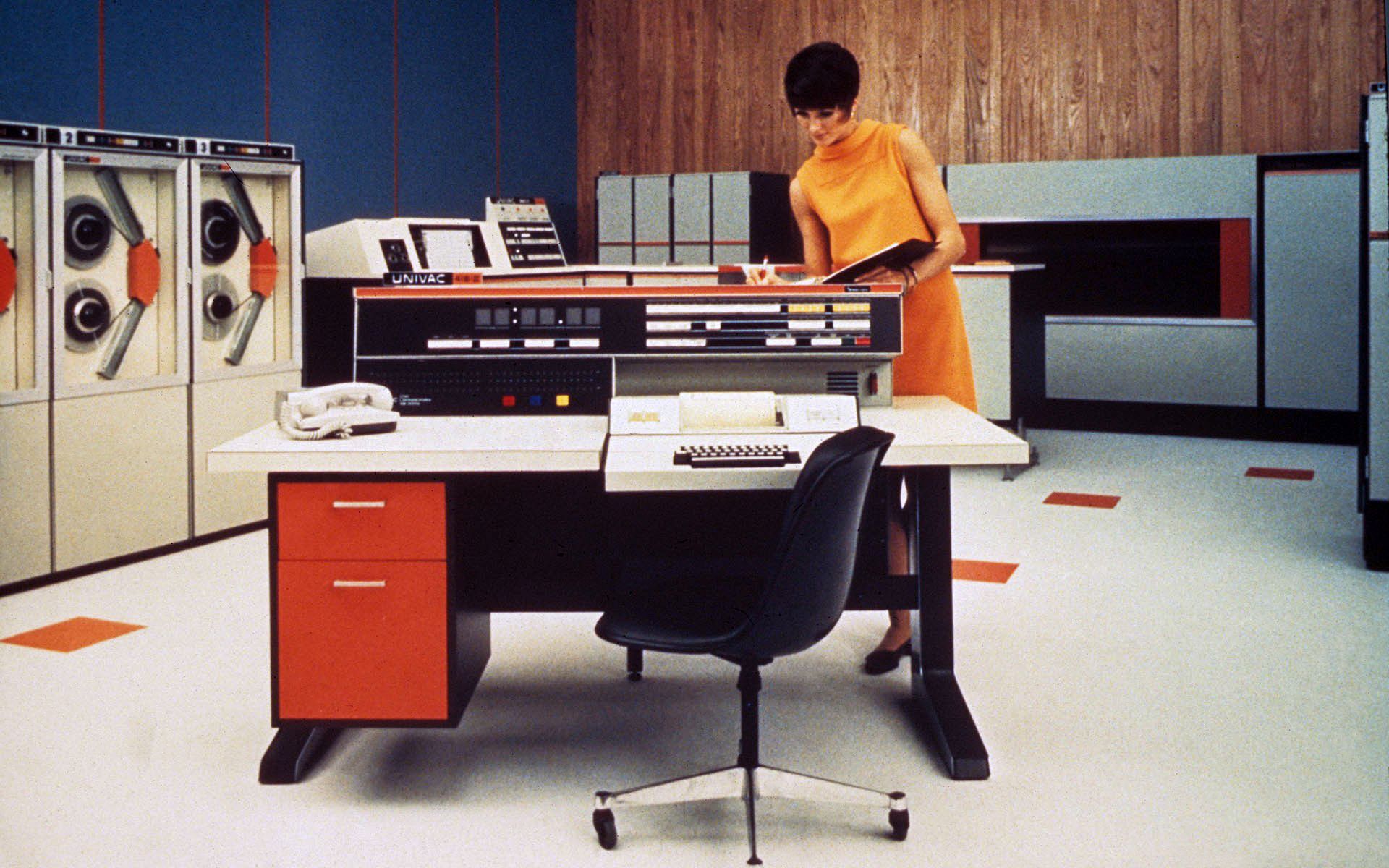
And these tables sometimes had very interesting shapes. Here is another
Univac , with flashing lights, with a trinity of huge drives:

But even keyboards the size of a desk might seem tiny next to truly huge computer systems. Here is the
Hitachi HITAC M-280H from the early 1980s:
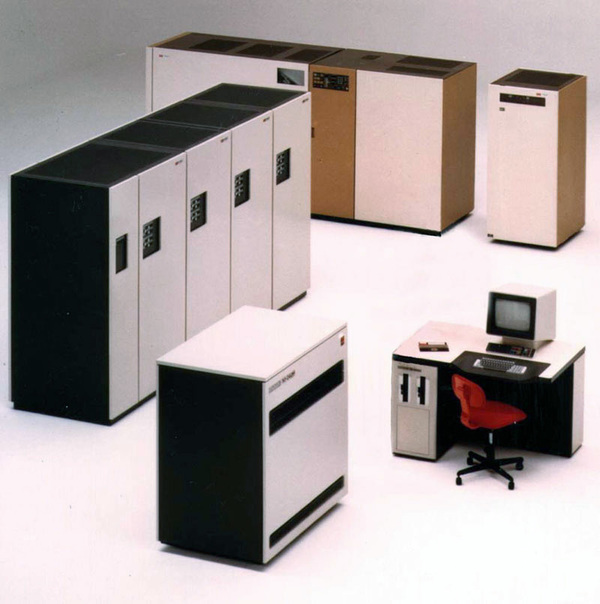
And, of course, not only computers were like that. Remember your Casio pocket calculator? In 1957, her calculators were larger:
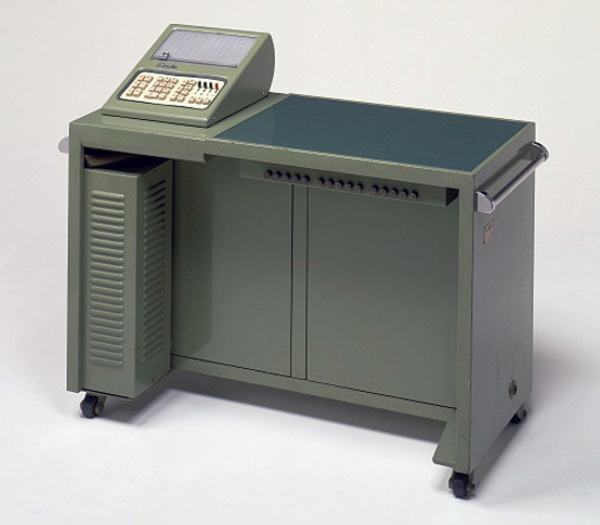
The company changed its name from Kashio Seisakujo to Casio Computer Co. on the day the Casio 14-A 150 kg calculator comes out with 300 watts of power. Look at his screen only!
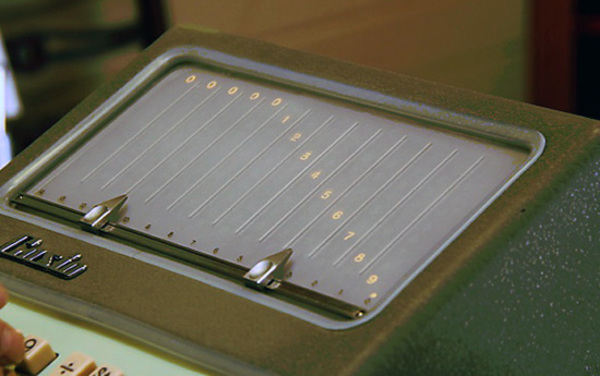
Calculators existed even before the advent of electronic devices - such as this National NCR 395, which combined an old-fashioned full-keyboard calculator with a typewriter:

Or this grand Exacta-Continental 6000 from the 1950s:
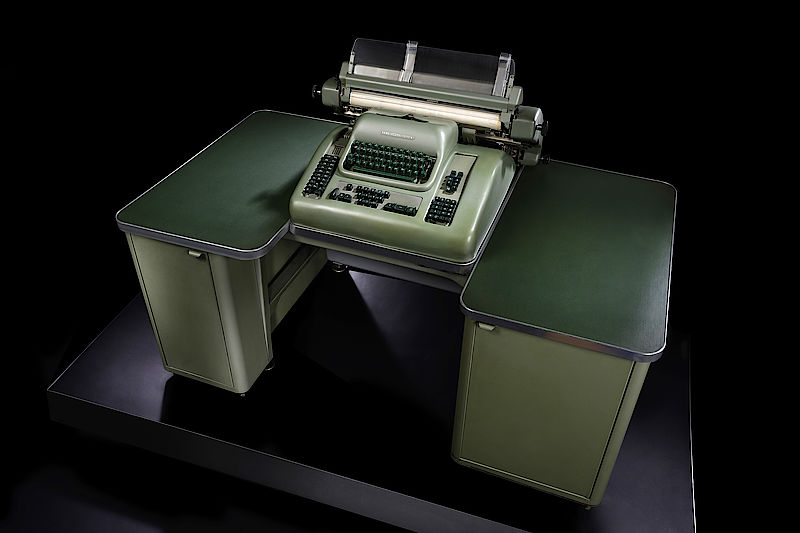
Before displays, computers also relied heavily on typewriters, like this CDC 3300 with an amazing console:

As a result, NCR also began to produce computers, among which was this gorgeous red NCR 315:

I know a strange photo. But this is an advertisement, and this is the only NCR 315 image I could find.
These computers could not be called portable, but this did not stop Amdahl from
advertising a whole series of computers, strangely standing in the open. Here is 470V / 7, threatening not just one, but two lines of the San Francisco cable car:
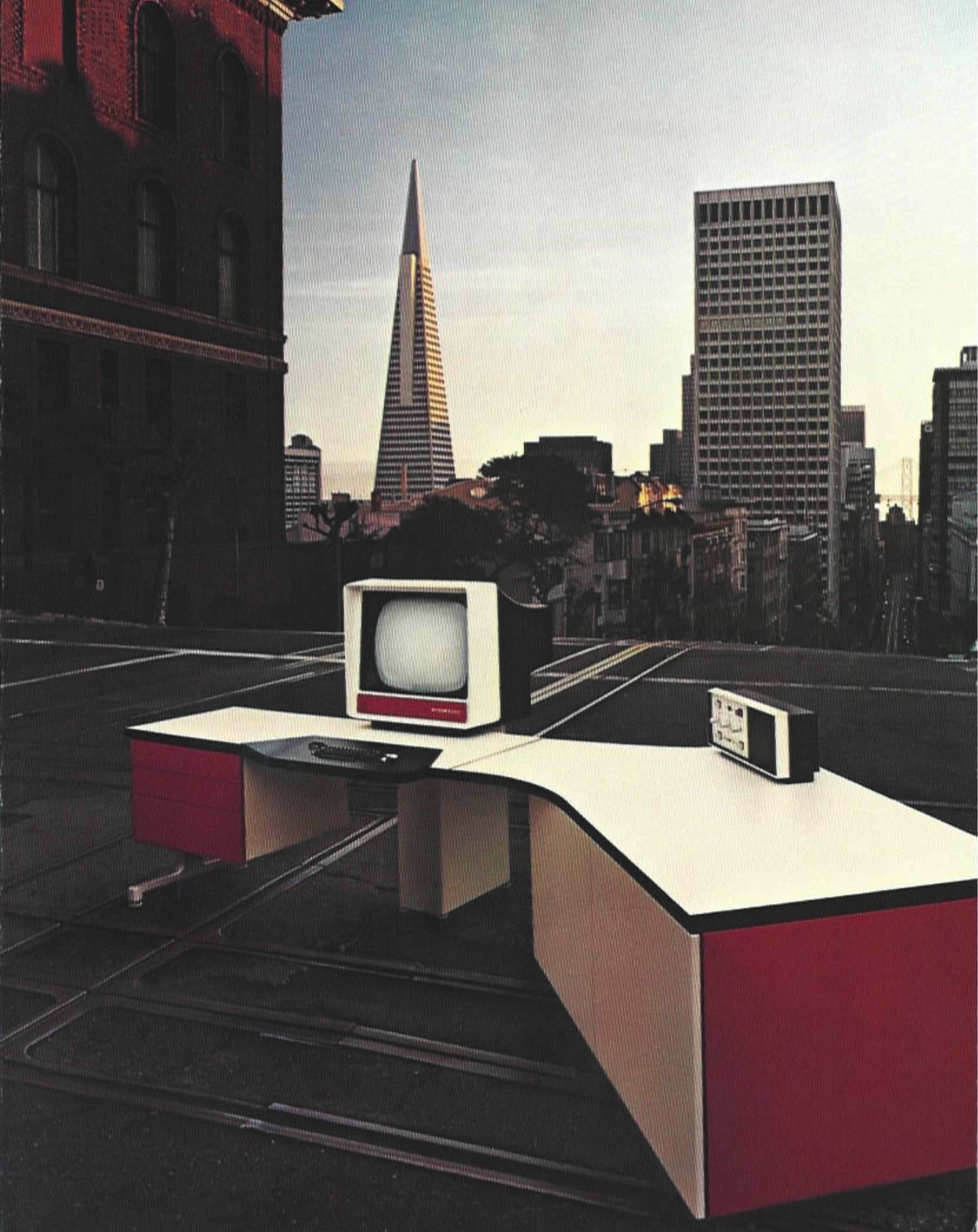
Keyboards in nature can be distinguished into their own separate microgenre. Here is the Teletype Model 40, “revealing many paths for you,” at least metaphorically:
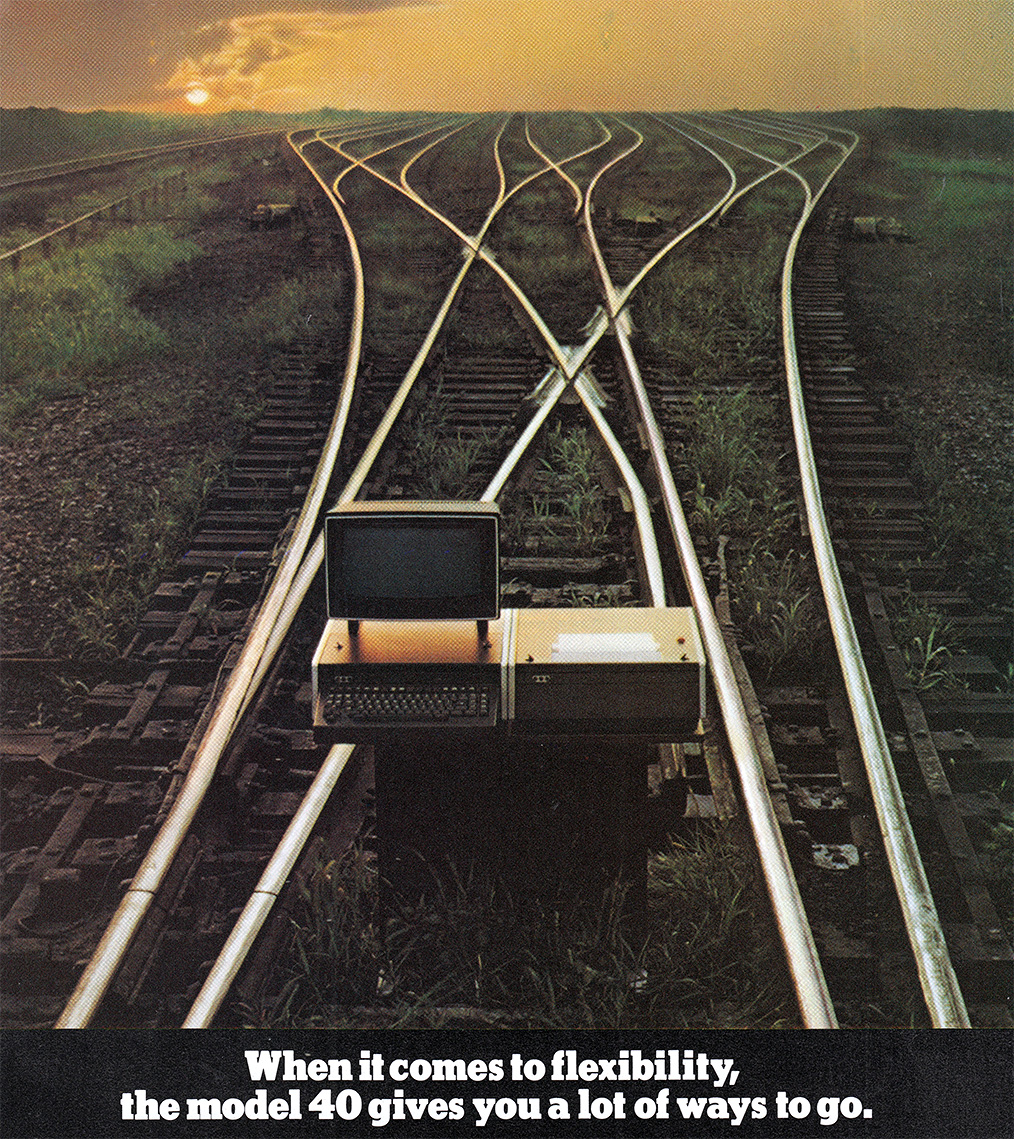
And here are some people resting, you know, on the golf course with a special terminal, like all technically savvy architects at that time:

Here is a 3M computer freezing in the cold, because ... It is not clear why (the slogan read “unusual computer” [uncommon com], but this could be believed with a stretch of the imagination):
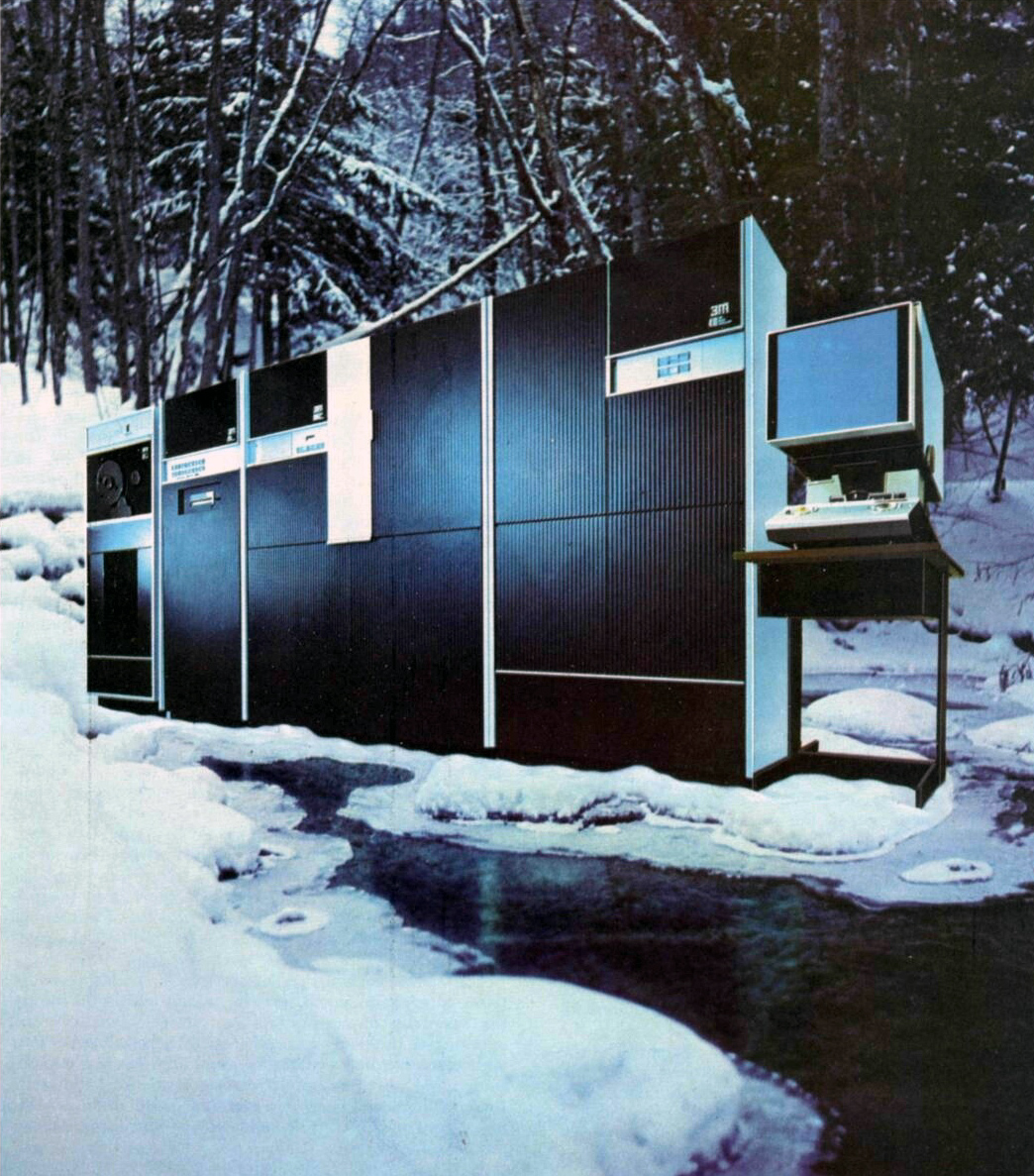
Sol from the 1970s moved to the desert, because it was "a small computer that will not bother you":
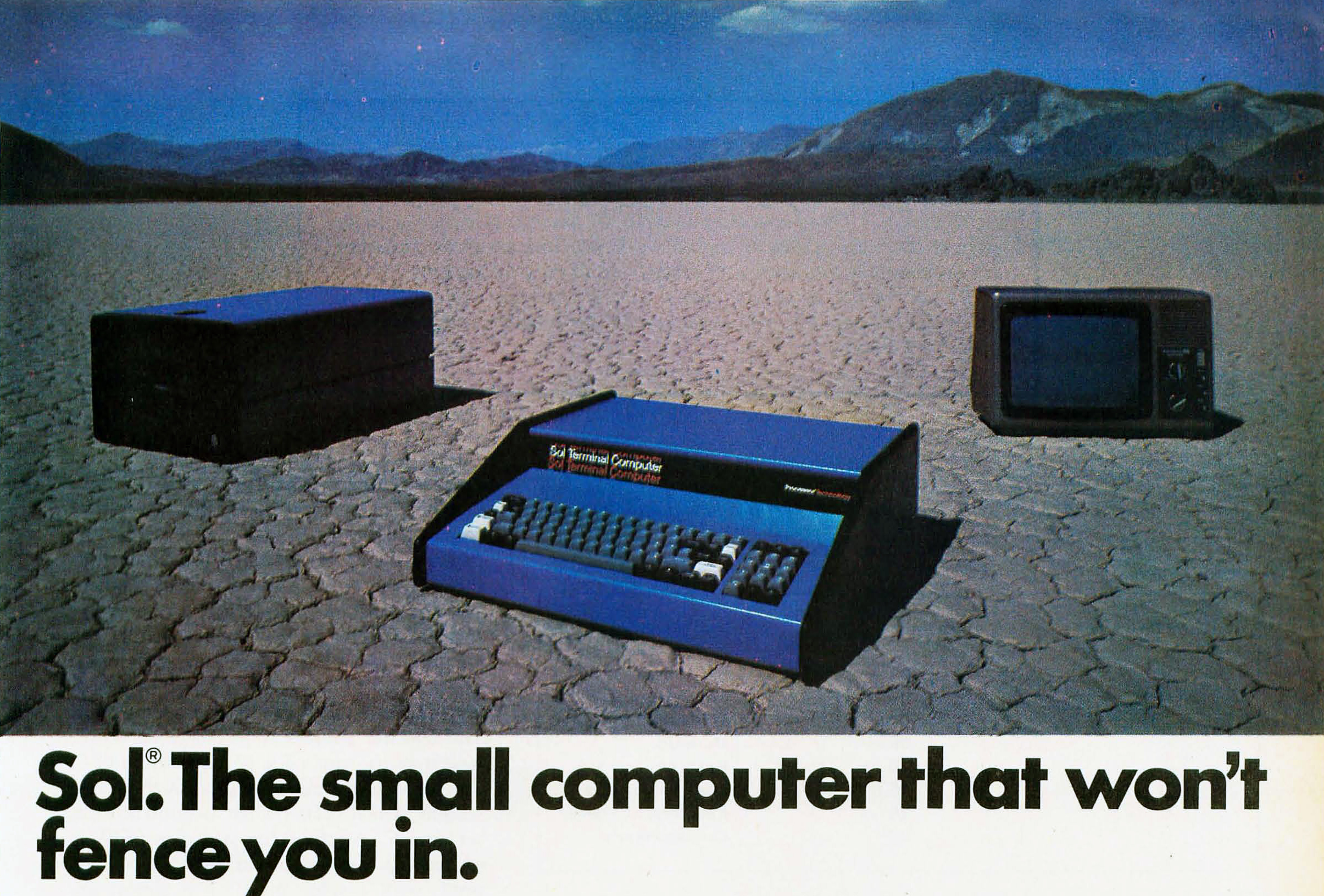
And if you prefer soft sand, here is the Incoterm terminal on the beach:

And the whole Incoterm family during a boat trip:

Questions?
But let's get back to the indoor keyboard tables. I especially like the recessed keyboards and screens of some systems. Here are the inspirational angles of the IBM 5382 System / 38:

Here is the built-in Sharp Hayac 3800 display with a large Japanese input device:
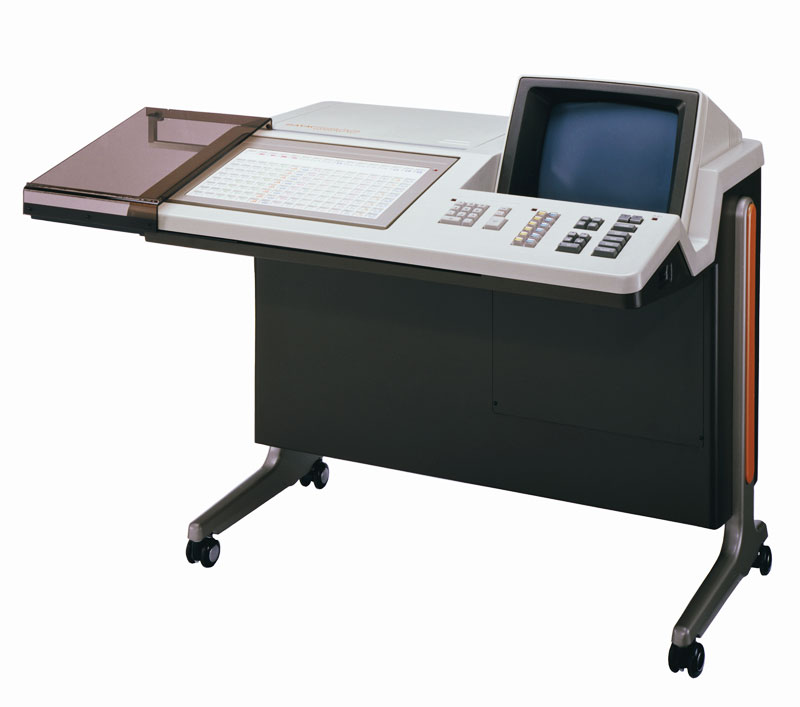
Here is the IBM 3741 from the early 1970s:
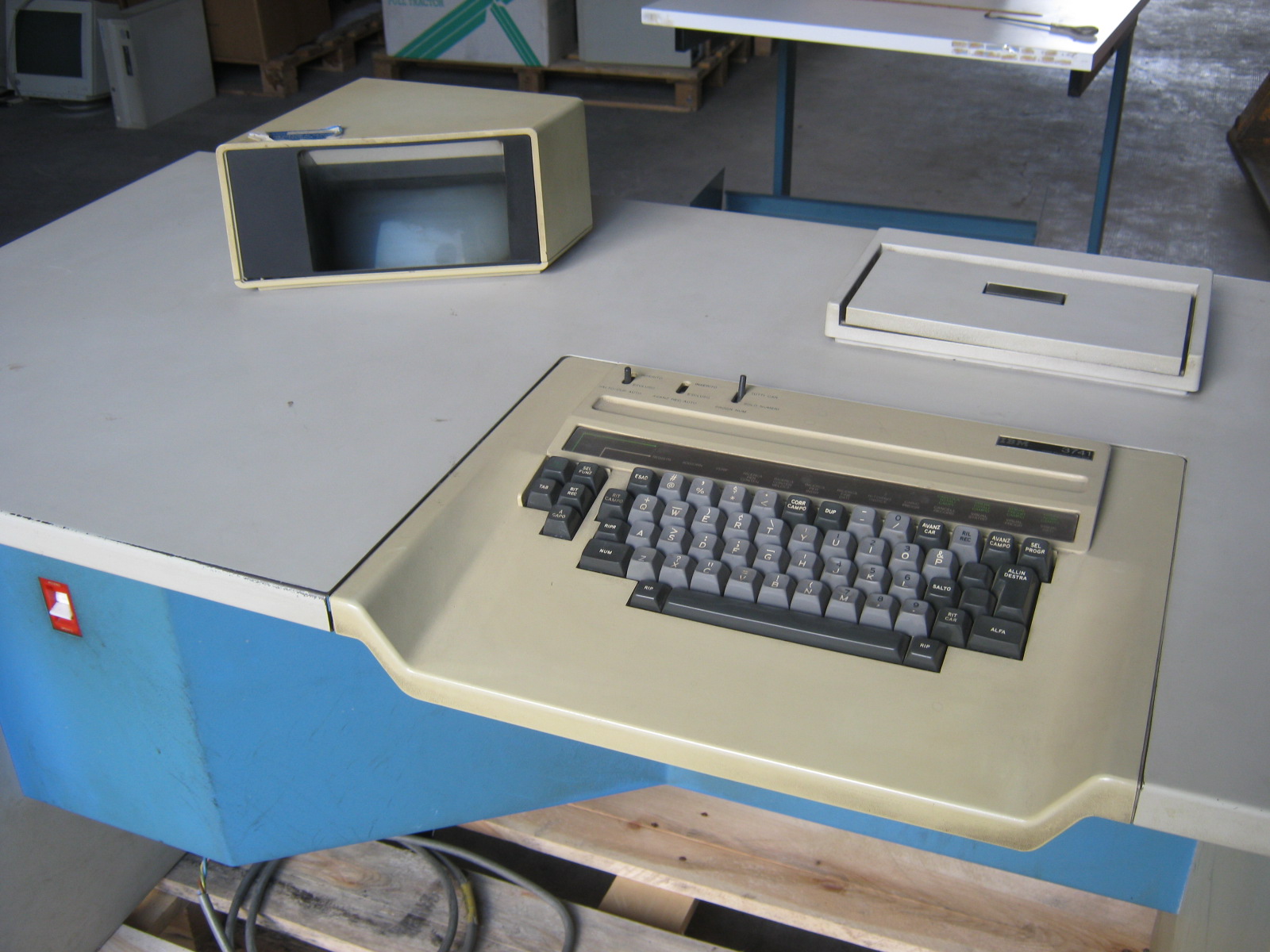
And the HP 250, just a few years younger than him:

You could pay attention to the general tendency of these photos - very small screens of strange shapes. It turns out that the very first displays were very expensive. This explains the tiny red display of the Burroughs B 80-41 / 141:
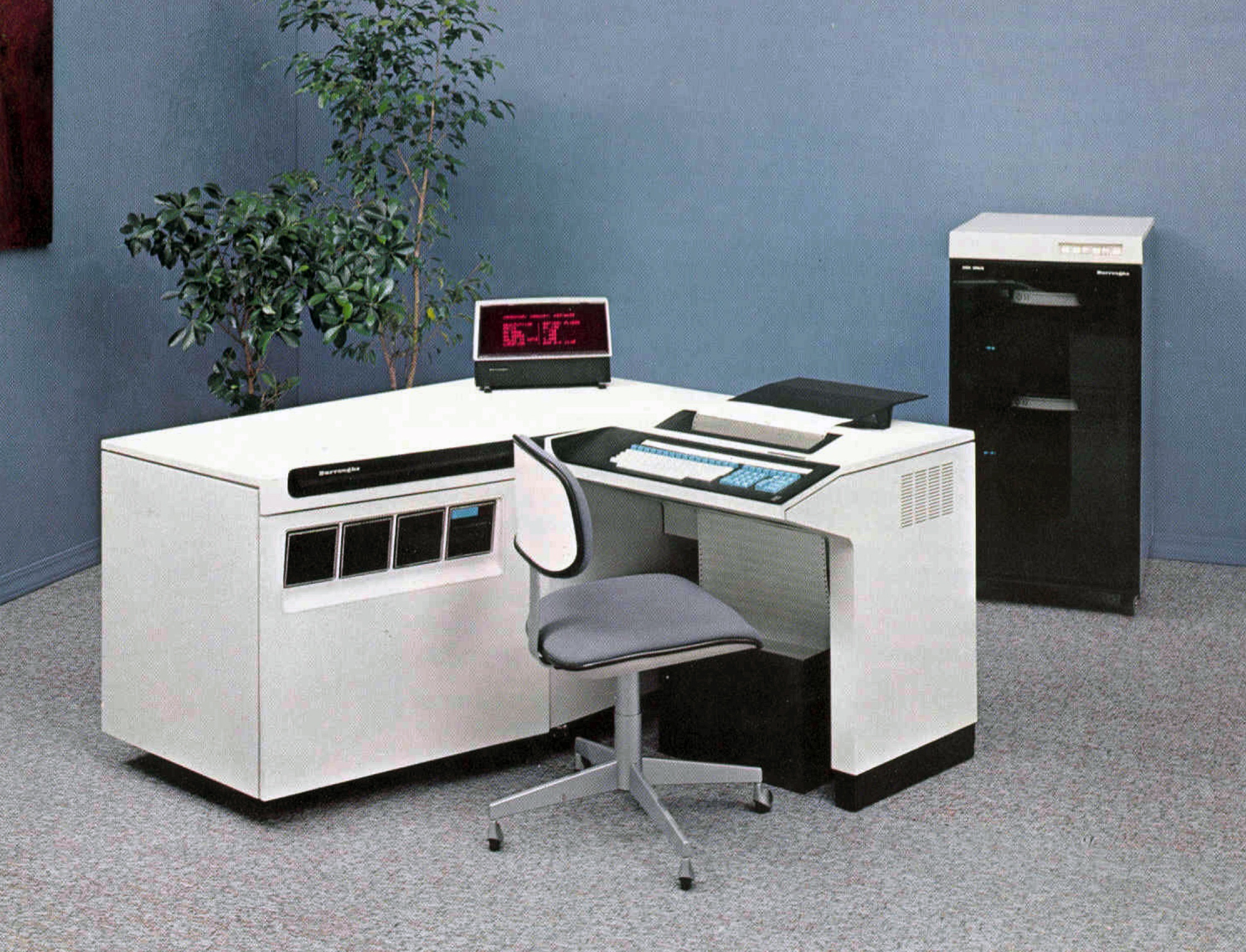
And such a close-up of the IBM 5320 printer next to a tiny screen:

And a special version of IBM 3741 called 3742, in which one screen was divided by a prism, and could serve two people sitting at the same table, with two keyboards connected:
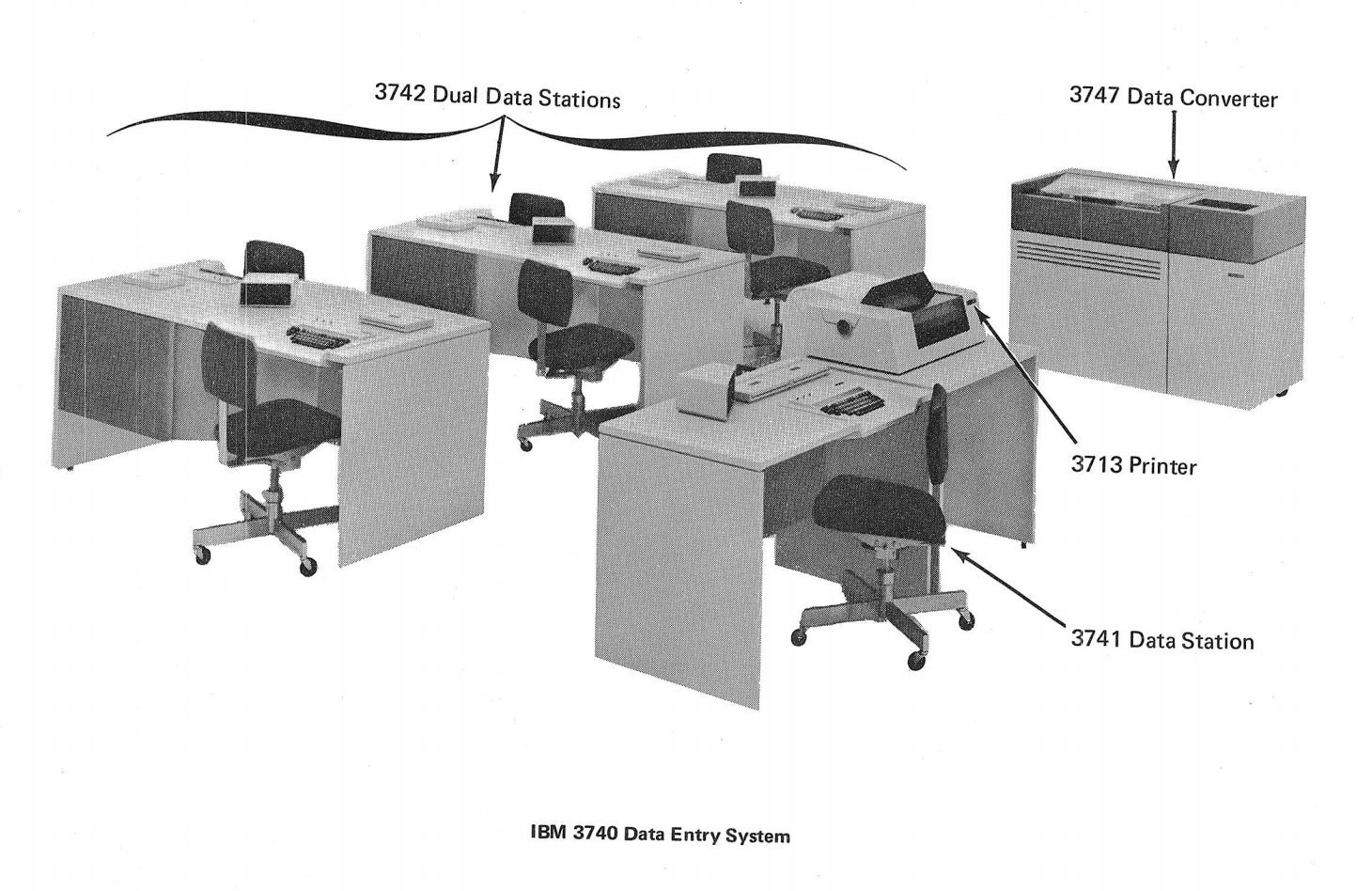
Double tables were not the only interesting idea. There were computers more like cubes - here is the Burroughs B91:
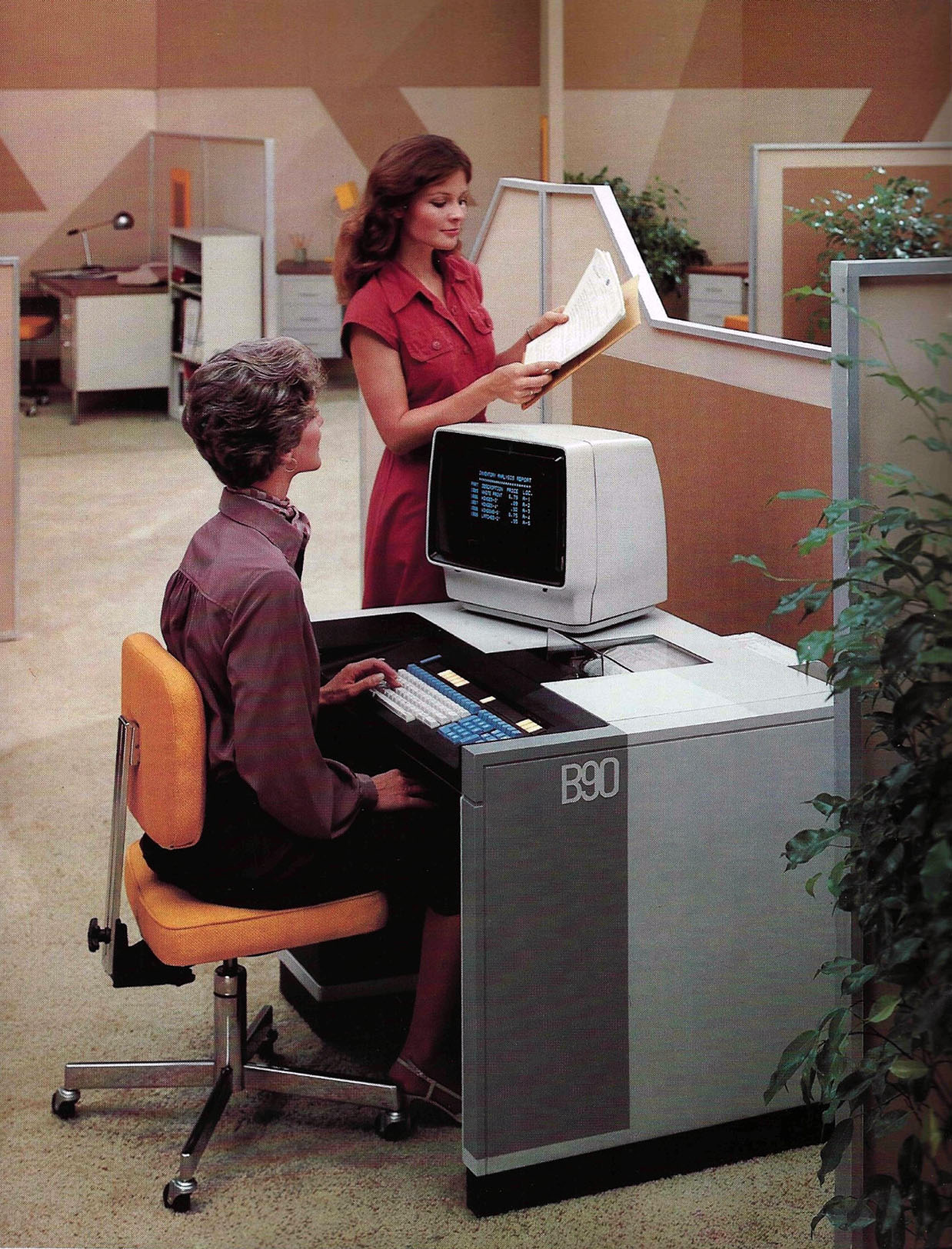
The company Noval from San Diego produced a rare car, with all its appearance talking about the director's status:
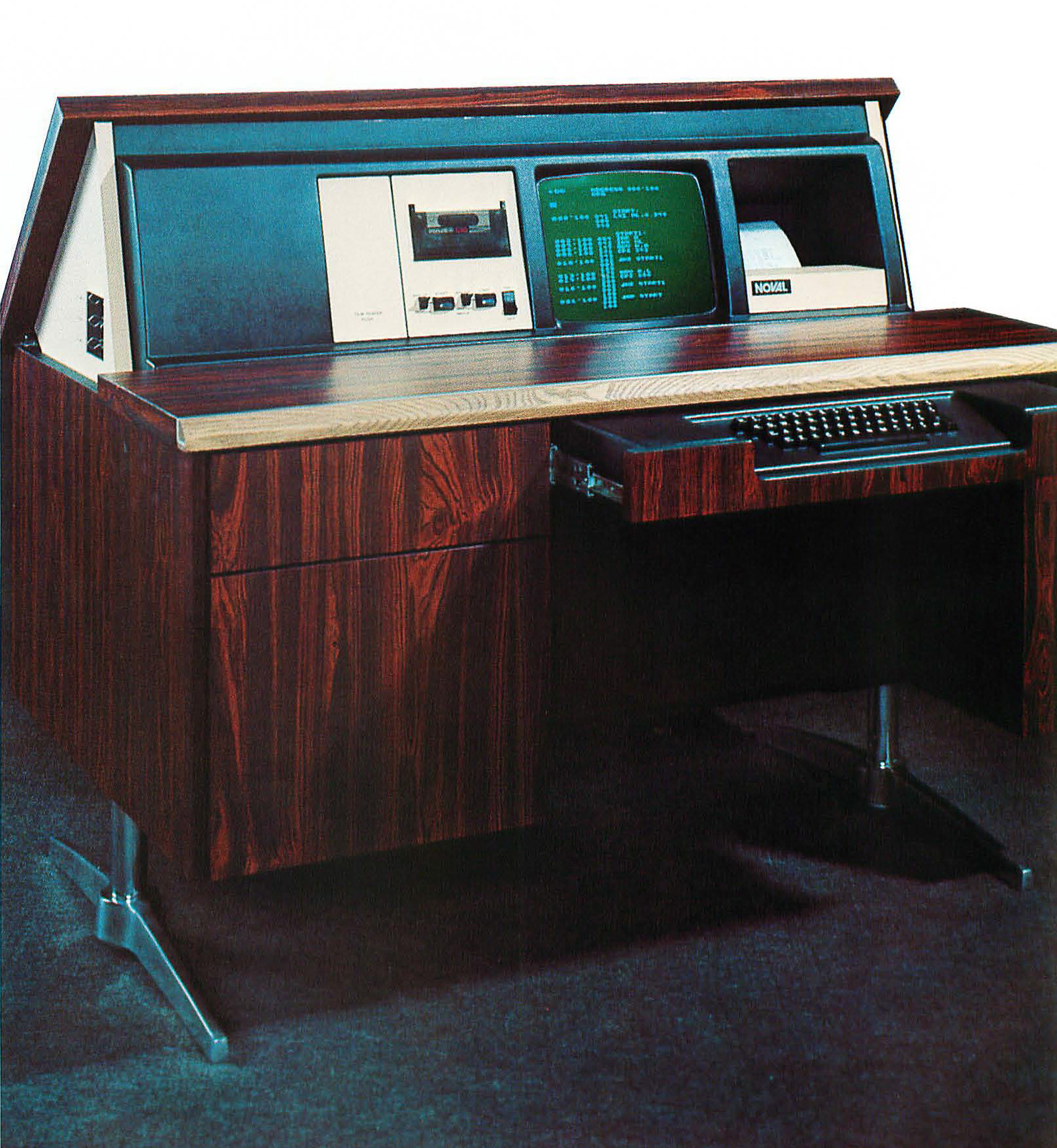
But Olivetti naturally had the best design keyboard tables; here is
ELEA - Elaboratore Elettronico Automatico - 9003 from the 1950s:

It developed in 1967 P203:

And then to the
Olivetti TCV 250 terminal (again with a tiny but beautiful screen) about the same times:
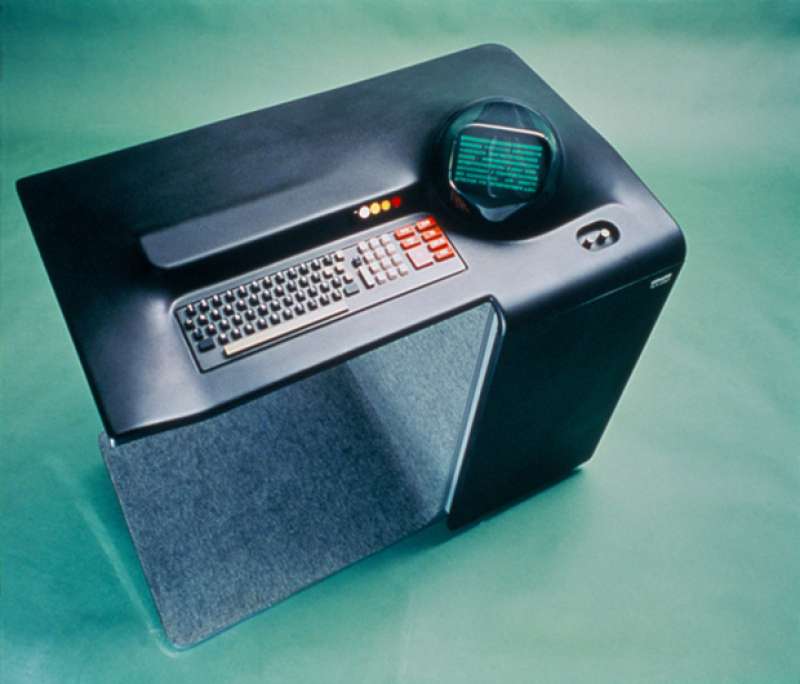
But most of them I probably like the beautiful
Olivetti Programma 101 , whose appearance resembled a school desk:

The era of keyboard tables has almost come to an end with the 1970s. There were, of course, exceptions - late special keyboards, which had to occupy a large space to accommodate all the keys:
 Aesthedes, a video editing platform
Aesthedes, a video editing platformOr paroxysms like this $ 4,500 2018 desktop:
 Note that in addition to this photo, all the other cables in this article are not visible
Note that in addition to this photo, all the other cables in this article are not visibleBut on the whole, there will never be another such era - and the one we are in is becoming more foggy every year. Many of the photos above are blurry scans or advertising images, because the cars themselves did not live to 2019 - they were thrown out because they were too big to be left, too young to keep them, too corporate to It was up to them.
Therefore, a good photo of a large computer reminiscent of furniture can be considered so valuable, and I want to finally give you a modern photo, the best of all. This is a photograph of an IBM 1130 from 1965, with no display, taken by James Ball for his
Computing Guide series. The series perfectly demonstrates the forgotten beauty of these old cars and reminds us of those strange times when keyboards were one of the smallest components of a computer, and not today, as the largest.
